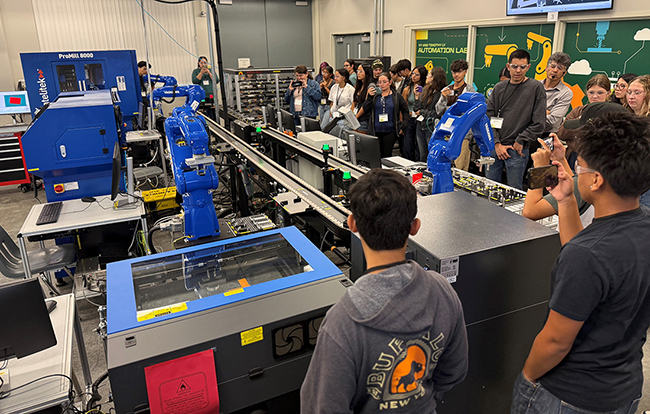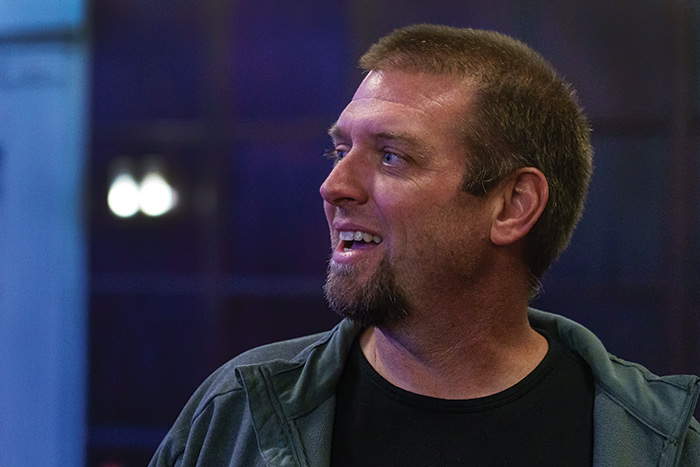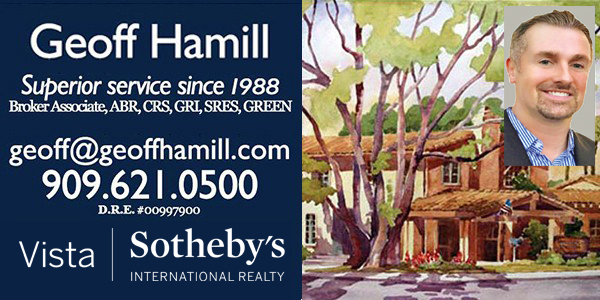2025: Change is inevitable…
Claremont can be a shining example
Looking to the future, more specifically the next dozen years, Persis Newland—an intuitive who gives readings at Kindred Sprits, a Claremont healing center she co-owns with her husband Chuck—sees the world as striking a new balance.
She predicts the masculine energy that has prevailed for many years, typified by the United States’ ongoing state of war and the current sink-or-swim economic climate, will be tempered by greater feminine energy.
“I see money and finance as masculine energy,” she explained. “The goddess or feminine is trade, sharing and communal thinking.”
Many people have been downsized from the corporations they once worked for. Others have found themselves shunned by banks, which see the proverbial little guy unworthy of investing in. When the financial crisis hit, for instance, the Newlands applied to 2 different banks for loans to keep their business afloat and were denied. Somehow they weathered the storm, pushing through without taking on any debt.
A few years ago, Ms. Newland said, people were beating themselves up for having been so trusting in pursuit of the American dream. Now, she asserts, people are shaping new dreams. One client recently informed her that she was starting her own business. Another client told her he’s picked up the guitar again and is ready to pursue some gigs.
“The little guys are starting to value themselves more and more, not just financially but for their whole being,” Ms. Newland said. “Moving into 2025, more people will be following their bliss, asking ‘What do I want to do?’ They’ll be projecting loving energy into the world instead of doing something that stifles them.”
In the future, Ms. Newland says “spirit”—the source to which she attributes the messages she relays—will increasingly prompt people to project loving energy via the technology of the Information Age.
“Texting is a good example,” she said. “Often, when someone is struggling, they will tell me, ‘I got a lot of texts today,’ with more than one person showing concern. The way we can instantly tap into people’s lives to show love and support is amazing.”
Women to play a bigger role
Ms. Newland predicts other manifestations of more feminine, communal thinking such as more women in politics, greater care for the planet and greater concern for society’s most vulnerable members, such as low-income residents, homeless people, children and the elderly.
It is a sea change that is already underway.
Here in Claremont, the city has partnered since May with members of local churches and groups like Occupy Claremont and “Claremont Elders for the 99 percent” in an effort called the Summer to End Homelessness. Participants aim to secure sustainable housing for the Claremont homeless population and help them find support such as food stamps, general relief and medical and psychological examinations.
“We’re coming to understand that everyone in the community is valuable, and needs to be at a certain level of okay-ness,” she asserted. “When we don’t feed the poor, it’s like chewing on your own foot—no, it’s more like having an infection in your foot and ignoring it. It’s still your own foot.”
If having a struggling neighbor is akin to having an infected limb, living on a polluted planet means your whole body is sick, according to Ms. Newland. She believes ecological thinking will expand over the next decade and beyond out of sheer necessity.
Ms. Newland, who shudders to think of all the plastic water bottles currently heading for landfills, projects that children will help lead the charge. Why can’t kids take the recyclables their families don’t want to deal with to their schools, she asked? Why can’t schools serve as centralized recycling locations, she posed?
Ms. Newland applauds the global growth in environmental awareness and local movements such as Sustainable Claremont. She feels that more emphasis, however, needs to be placed on food sustainability, a focus that combines “going green” with nourishing people struggling to stay afloat.
Ms. Newland notes that some organizations sprouting up have the right idea, heading for the yards of people with an over-abundance of fruit and sharing the pickings with those in need.
Ms. Newland said she would love to see another development: More young people organizing to cultivate senior citizens’ land, helping them reap the fresh, healthy produce they need.
The choice to garden, to patronize farmer’s markets and to buy organic produce will become more crucial as more food becomes subject to scientific tampering, Ms. Newland predicts.
“Looking at genetically-modified food, all of our bodies are having to adjust to it,” she points out.
She may be known for her insight, but Ms. Newland has as many questions as she does answers. Why do so many of us walk past the organic offerings at grocery stores? And why are we planting elms instead of fruit trees?
Ms. Newland, who this month is celebrating Kindred Spirit’s 20th year of operation, lives with her husband on a half-acre ranch in Chino, tending chickens and raising pesticide-free vegetables and herbs.
Their Wild Rock Family Farms also serves as a haven for tortoises, including 4 African spur thigh tortoises, and for the Newlands’ grandchildren. Seeing the kids playing in the dirt with recycled buckets that once served as food containers brings new meaning to the term reduce, reuse and recycle.”
They’re not completely off the grid on their homestead, but Ms. Newland sees a future in which an increasing number of businesses and households downsize their utility bills and their carbon footprints. She points to the Brahma Kumaris World Spiritual University, a Hindu center in Chino that is powered via solar and wind energy and which makes use of water recycling technologies.
So Ms. Newland was chagrined when a Chase Bank was built in Claremont on Foothill Boulevard in 2012 in the Sprouts Market center that houses Kindred Spirits, because the building had no solar panels installed or any other discernable green features.
“There shouldn’t be another building built on the planet that is not self-sustaining,” Ms. Newland said.
It’s always been the way of the world that there are edgy people ready to question the prevailing paradigm and those who take a wait-and-see attitude, Ms. Newland said. Considering that she deals in the often-marginalized metaphysical realm, one might safety guess that she’s one of the edgy ones.
“I’m always optimistic. I believe we can do anything,” she said. “We’re supposed to be made in God’s image. Why can’t we do anything? Why can’t we harness the sun? People can’t make changes into the future if they can’t think futuristically.”
Looking to the future, Ms. Newland says water will continue to be a crucial issue.
“I was going home yesterday and I saw a woman hosing off the sidewalk,” she related. “I was like, ‘Are you listening?’”
In recent years, Claremont administrators and many residents have become convinced the city should acquire its water system from the Golden State Water Company to halt the seemingly endless escalation of water rates. Ms. Newland feels they are on track. “If something has to do with the well-being of the citizenry, I don’t believe that there should be shareholders to answer to.”
Managing an influx of new residents
Ms. Newland has run a business in Claremont for 2 decades, but she has been frequenting the city for much longer, beginning when her children were enrolled in the preschool at Claremont United Methodist Church. Much has changed in the intervening years. Claremont used to all but shut down in the evenings, but now resembles Pasadena with its array of places to eat, drink and be merry.
With some 6 housing developments in the works, constituting more than 200 new households, there’s no doubt: By 2025, Claremont will be even more bustling. Some residents are missing a bit of the former quiet, and lamenting the difficulty of finding parking in the Village. Ms. Newland says it’s important to remember that the business boom has been a conscious choice.
“I remember the battle over Starbucks coming in to the city. All of the small businesses fought it, wanting the city to stay small and quaint,” she said. “After it came in, in ‘95/’96, it was fair game.
One area where growth of visitors to the city is apparent is in the Claremont Wilderness Park. Once, you might see a few dozen hikers over the course of a day. Now, there are hundreds. Many residents are expressing chagrin at the bumper-to-bumper lines of parked cars on Claremont streets, complaining that the once-tranquil park is overrun by so many outsiders. Ms. Newland emphasizes that the public space in the foothills of the San Gabriel Mountains is just that: public.
“It’s not your airspace. It’s communal space,” she said. “You can start in Upland and walk through Claremont and San Dimas. If we want to stop stuff, we need to stop development.”
Ms. Newland suggests city administrators think hard before crowding more housing and businesses into Claremont.
“We’re supposed to be the town of trees,” she said. “We need to be what we say we are.”
Overall, however, she applauds Claremont for being on the cutting edge of many of the movements that will typify the coming decades, such as enacting a sustainability plan and encouraging the creative reuse of buildings like the Packing House.
It all comes back to the rise of the feminine, according to Ms. Newland.
“What is showing in the economy is that we’re saying, ‘It’s okay to have stuff, but what about the community, the town, the children, the infrastructure and the planet itself?”
—Sarah Torribio
storribio@claremont-courier.com








0 Comments